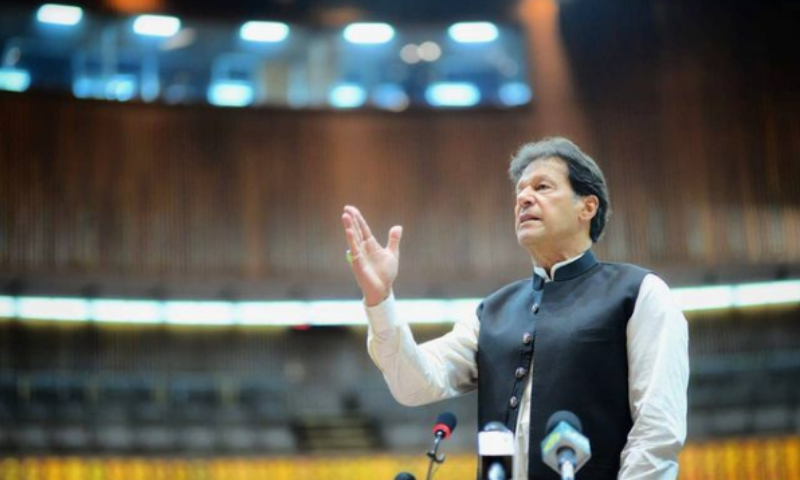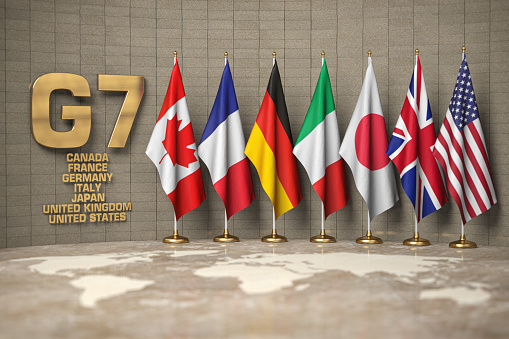By: Zrinka Boric

This article navigates the landscape of AI policymaking and tracks efforts of the United States to promote and govern AI technologies.
Technological advancement has become a new approach to increase a state’s political, military, and economic strength. The Cold War and the arms race between the two then strongest nations in the world, the United States of America (USA) and the Soviet Union (USSR), revealed the potential that lay in the development of technology. Today, the United States is again at the forefront in the race for supremacy in the potentially world-changing technology: artificial intelligence (AI).
Artificial intelligence has the potential to fundamentally change strategy, organization, priorities, and resources of any national community that manages to develop AI technology, lead to further innovation, and eventually apply it. Artificial intelligence is going through major evolution and development, and its potential is increasing at a speed rate. Progress is visibly accelerating, and our social, political, and economic systems will be affected greatly. One of the important questions is how to define and approach all the opportunities AI technology can offer while avoiding or managing risks.
The American AI Initiative
The United States is characterized by a skilled workforce, innovative private sector, good data availability, and effective governance which are all key factors for the government’s ability to enable effective development and adoption of AI.
The United States published its national AI strategy, the American AI Initiative, in 2019.The responsible organization is the White House, and its priority is to increase the federal government investment in AI’s Research and Development (R&D), and to ensure technical standards for safe AI technology development and deployment. American AI Initiative expresses a commitment to collaborate with foreign partners while promoting U.S leadership in AI. Nevertheless, it is important to note that the American AI Initiative is not particularly comprehensive, especially when compared to other leading nations, and is characterized by the lack of both funding and palpable policy objectives.
In 2019, the U.S. policymakers were advised to advance the American AI Initiative with concrete goals and clear policies aimed at advancing AI – such as spurring public sector AI adoption and allocating new funding for AI R&D, rather than simply repurposing existing funds.
AI in the USA Budget for FY2022
President Biden's budget for FY2022 includes approximately $171.3 billion for research and development (R&D), which is an 8.5% ($13.5 billion) increase compared to the FY2021 estimated level of $157.8 billion.
According to the 2021 AI Index Report, in FY 2020 the USA federal departments and agencies spent a combined $1.8 billion on unclassified AI-related contracts. This represents an increase of more than 25% from the amount spent in FY 2019.
One of the agencies with the major R&D program is the National Institute of Standards and Technology (NIST). President Biden is requesting $1,497.2 million for NIST in FY2022, an increase of $462.7 million (44.7%) from the FY2021 $1,034.5 million. The second-highest program budget increase in NIST is for Partnerships, Research, and Standards to Advance Trustworthy Artificial Intelligence, $45.4 million (an increase of $15 million compared to FY2021).
Some departments are expecting large percentage increases in R&D funding, among which the Department of Commerce, with an increase of up to 29.3%. At the same time, it is interesting to note that one of DOC’s latest projects is the creation of the National Artificial Intelligence (AI) Advisory Committee (NAIAC), which will be discussed below.
Numerous policymakers in Congress are particularly interested in the Department of Defense Science and Technology (DOD S&T) program funding. The increasingly popular belief in the defense community finds ensuring support for S&T activities as necessary to maintain USA’s military superiority in the world.
The budget request represents President Biden’s R&D priorities, and the Congress may agree with it partially, completely, or not agree at all. It is safe to say that AI has gained the attention of the Congress, considering the 116th Congress (January 3, 2019 - January 3, 2021) is the most AI-focused congressional session in history with the number of times AI was mentioned being more than three times higher compared to 115th Congress (115th - 149, 116th - 486).
National and International Efforts
As indicated in its national AI strategy, the United States takes part in various intergovernmental AI initiatives, such asGlobal Partnership on AI (GPAI), OECD Network of Experts on AI (ONE AI), Ad Hoc Expert Group (AHED) for the Recommendation on the Ethics of Artificial Intelligence, and has participated in global summits and meetings, such as AI Partnership for Defense, and AI for Good Global Summit. In addition, the United States announced a declaration of the bilateral agreement on AI with the United Kingdom in December 2020.
On September 8, 2021, the U.S. Secretary of Commerce Secretary Gina Raimondo announced the establishment of the National Artificial Intelligence (AI) Advisory Committee (NAIAC). The main purpose of the NAIAC will be to advise the President and the National AI Initiative Office (NAIIO) on issues related to AI. “AI presents an enormous opportunity to tackle the biggest issues of our time, strengthen our technological competitiveness, and be an engine for growth in nearly every sector of the economy. But we must be thoughtful, creative, and wise in how we address the challenges that accompany these new technologies,” Commerce Secretary Gina Raimondo said.
The United States or China?
The United States is showing an increasing interest in developing and implementing artificial intelligence through the increase in federal AI-related budget, establishment of new committees, intergovernmental AI initiatives, bilateral agreements, and participating in global summits but the constant comparison is being made between USA and China. Should the future battle over artificial intelligence be between USA and China, the question arises: Who will win this battle for AI supremacy?
Recently, a former Pentagon expert said that the race is already over, and China has won. The Pentagon’s first chief software officer resigned over the slow pace of technological advances in the U.S. military. He claims the USA has no competing fighting chance against China in the upcoming years and that it's already a done deal.
At the same time, an expert in artificial intelligence Kai-Fu Lee, former President of Google China, disagrees with this claim. He notes that the US has a clear academic lead in artificial intelligence, supports his claim by noting that all 16 Turing award recipients in AI are American or Canadian, and the top 1% of papers published are still predominantly American. China is simply faster in commercializing technologies and has more data.
Artificial intelligence already has numerous uses (academic, military, medical, etc.) and when assessing countries' AI technology reach it is important to separate different uses of technology.
To answer the question on whether the United States or China will win AI 'race' or whether a new force will emerge, it is necessary to closely monitor artificial intelligence technology development and compare different countries using a uniform set of criteria before reaching a conclusion. Another potential scenario, as highlighted by Kai-Fu Lee in his book AI 2014: Ten Visions of Our Future, states the possibility of United States and China co-leading the world in technology.
Image Source: https://www.pexels.com/photo/blue-bright-lights-373543/



